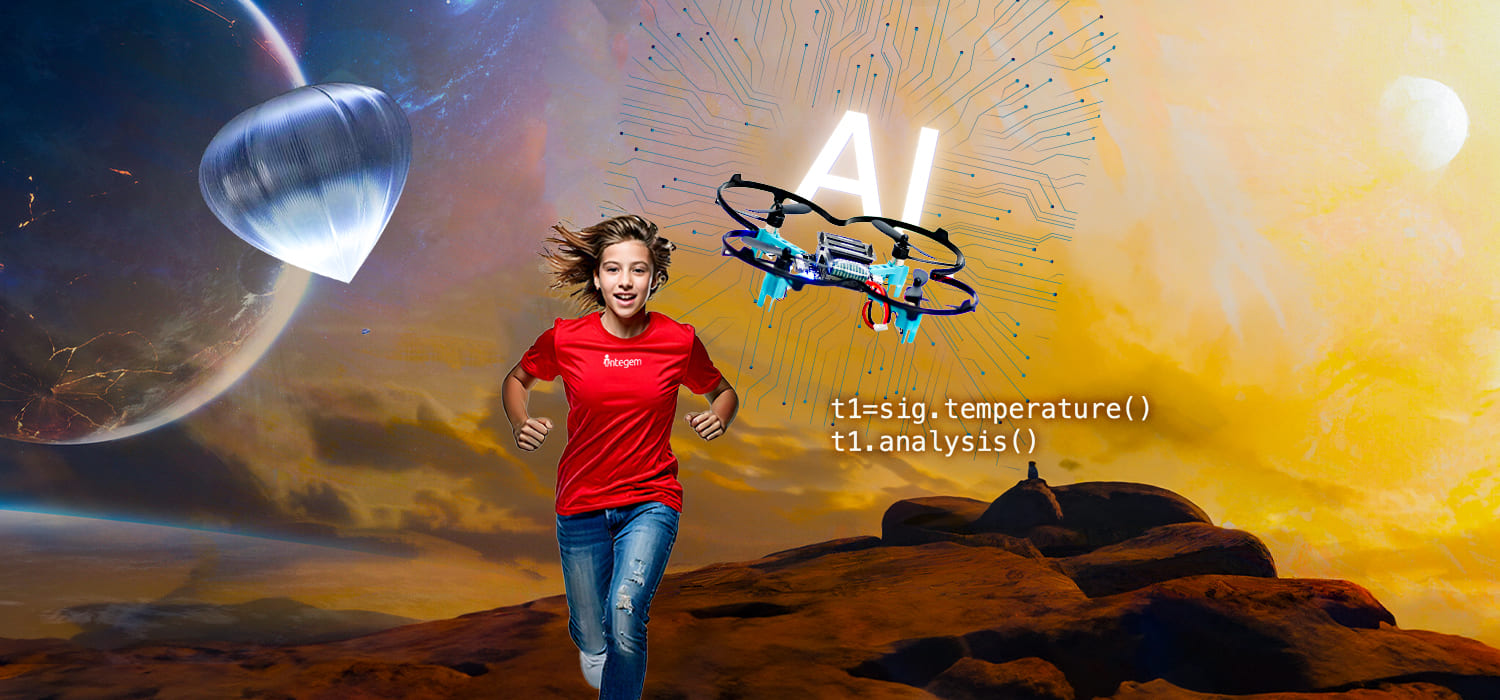
AI Space Tech with NVIDIA AI: Build, Code & Innovate for High Schoolers
AGES: 14+
LENGTH: 2 week
DESCRIPTION
High school students (Ages 14+) will explore the cutting-edge fields of drone engineering, artificial intelligence (AI), and space communication in the AI Space Exploration Camp. No prior computer or space knowledge is needed. Students will receive NVIDIA AI certification after successfully completing the camp.
This camp is fully accredited by the Accrediting Commission for Schools, Western Association of Schools and Colleges (ACS WASC).
Imagine this: programming AI-powered drones to autonomously navigate simulated space environments, analyze real-time data, and make intelligent decisions using NVIDIA AI. Students will harness NVIDIA’s advanced computational power to process space data, uncover insights, and develop solutions to real-world challenges.
The Hardware Students Will Work With in the Camp
- Drone Kit: A programmable drone equipped for customization and exploration of flight dynamics.
- AI System with Camera and Helium Balloon: An AI module integrated with the drone and paired with a helium balloon to simulate a zero-gravity space environment, enabling autonomous navigation and real-time data-based decision-making.
- AI Space Communication System: Tools for hands-on learning about LoRaWAN space communication, enabling long-range data transmission, and the NVIDIA AI platform for advanced data analysis and intelligent decision-making.
Students will learn robotics mechanics and sensors, robotics engineering control, robotics Camp
- Introduction to Drone Mechanics
- Basics of Aerodynamics for Drones
- Drone Motor Controls
- Python Coding for Drones
- Drone Programming & Debugging
- Introduction to AI
- AI-Based Drone Control
- Integration of AI and Camera for Autonomous Navigation
- Interactive Coding for AI Drones
- Introduction to LoRaWAN Space Communication
- NVIDIA AI System for Real-Time Space Data Analysis & Application
- AI Space Exploration
Collaborative Space Balloon Launch: Students will work together to launch a space balloon equipped with LoRaWAN communication technology to an altitude of 30,000 to 100,000 feet. The launch date and time will depend on weather conditions, FAA approval, and air traffic restrictions.
What Makes the three-week AI Space Exploration Camp Exciting?
- The Power of AI in Drones: Learn how AI transforms drones into intelligent explorers! Students will program drones to think and act autonomously, enabling intelligent navigation and efficient task execution.
- NVIDIA AI for Real-Time Space Intelligence: Experience the advanced capabilities of NVIDIA AI. Students will process large datasets, analyze space-like images, and simulate real-world decision-making—all in real time. It’s like giving drones the ability to "see" and "respond" with precision.
- Hands-On with Advanced Technology: Students will work with cutting-edge tools in AI, drones, and space communication, gaining practical skills that prepare them for future academic and career opportunities.
- Creativity Meets Innovation: Drawing from Stanford University’s Design School curriculum, students will use design thinking to develop imaginative and practical AI and space exploration solutions.
This camp is a journey into the future of technology, where students explore, create, and innovate in ways that make learning both exciting and impactful!
What students will learn:
- Introduction to AI (Highschool Level)
- AI-Based Drone Design and Control (Highschool Level)
- Beginning to Advanced Drone Engineering (Highschool Level)
- Beginning to Advanced Drone Coding (Highschool Level)
- Python Programming (Highschool Level)
- Intermediate Holographic AR Design and Logic (Highschool Level)
- Space Communication with LoRaWAN (Highschool Level)
- NVIDIA AI for Real-Time Space Data Analysis (Highschool Level)
- UI/UX Design (Highschool Level)
- Debugging and Problem-Solving (Highschool Level)
- Design Thinking Process (based on Stanford University Design School curriculum)
********************
Safety and FAA Compliance
The Federal Aviation Administration (FAA) regulates all U.S. airspace to ensure safe and lawful operations, including activities involving drones and space balloons. To provide a safe and structured learning environment, we combine FAA regulations with additional safety measures tailored for our program.
Why This Matters
- FAA Rules: Govern activities like space balloon launches to avoid interference with air traffic and ensure safe operations.
- Our Safety Guidelines: Protect students, equipment, and the learning environment, addressing specific risks associated with drones and space technology.
- Responsible Learning: Students develop real-world skills by learning to follow safety protocols and regulations essential in aerospace fields.
How Students Comply
- Designated Drone Areas: Drones are flown only in approved areas to ensure safety and prevent damage.
- Supervised Space Balloon Launches: These occur only on FAA-approved dates, times, and locations under teacher supervision, considering weather and air traffic conditions.
- Controlled Space Drone Use: Space drones are not released into the atmosphere and are operated only in controlled settings.
- Safety Protocols: Students follow all instructions and handle equipment responsibly to minimize risks.
By adhering to these rules, students gain hands-on experience in a secure environment while exploring the exciting world of drones and space technology.
